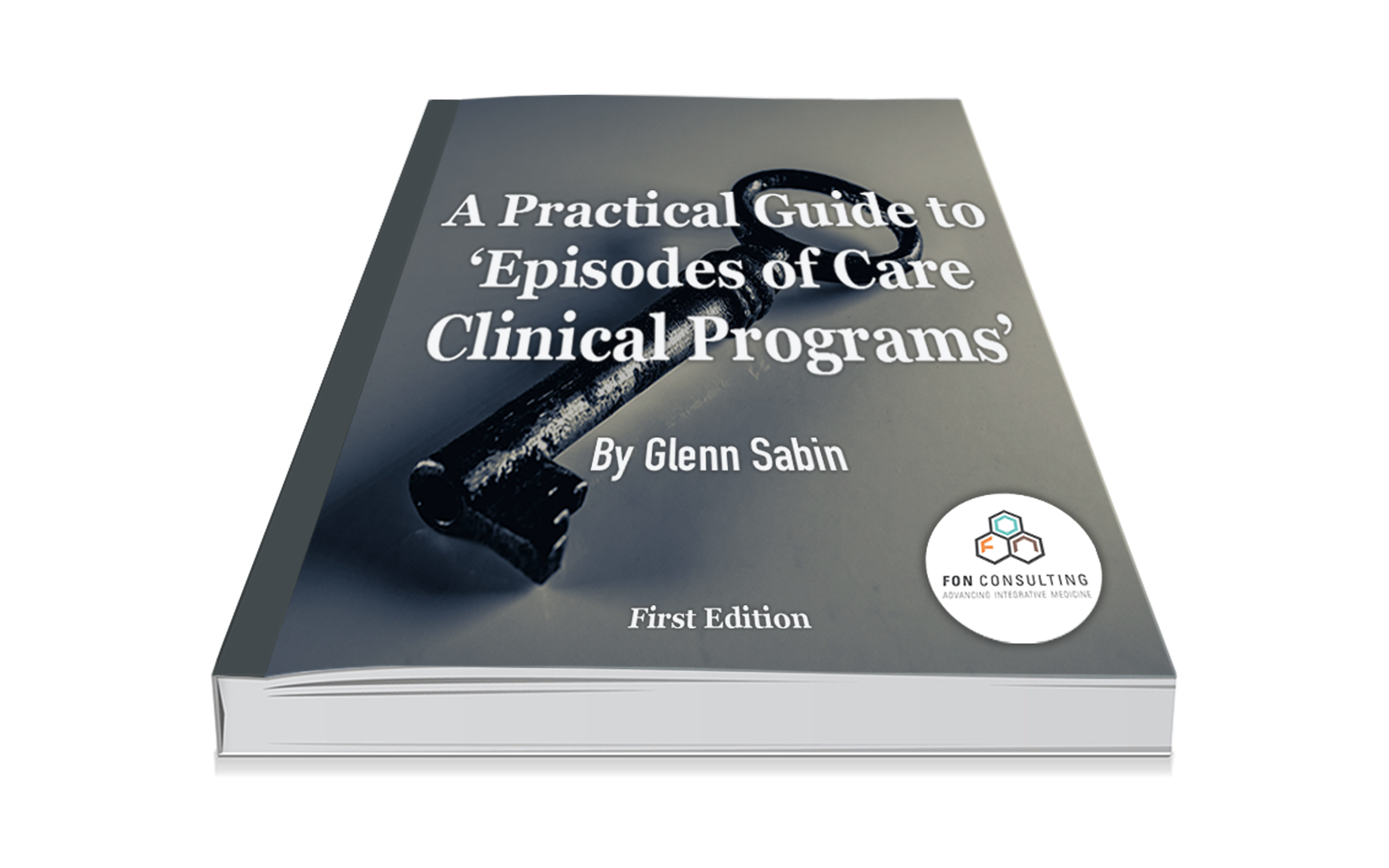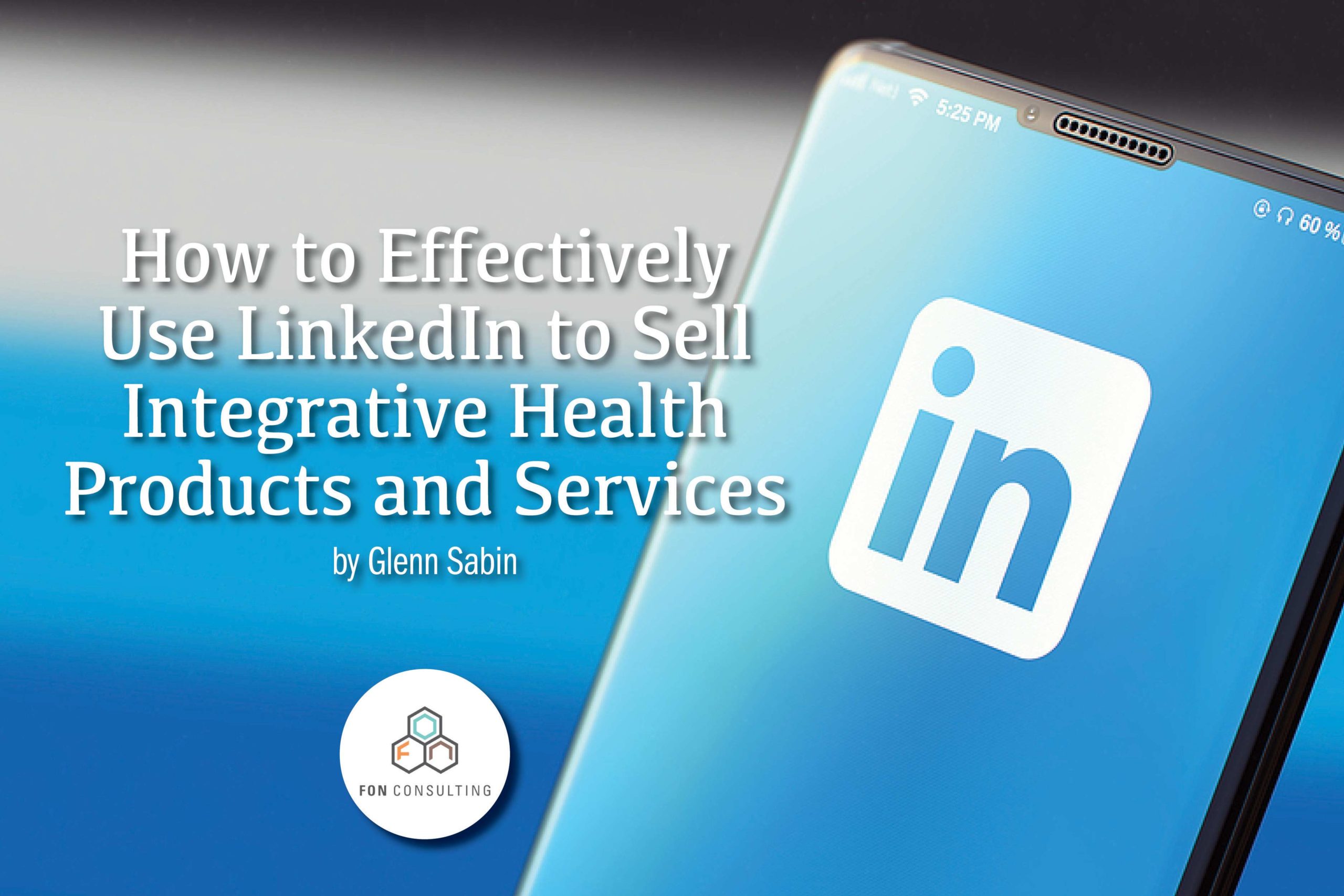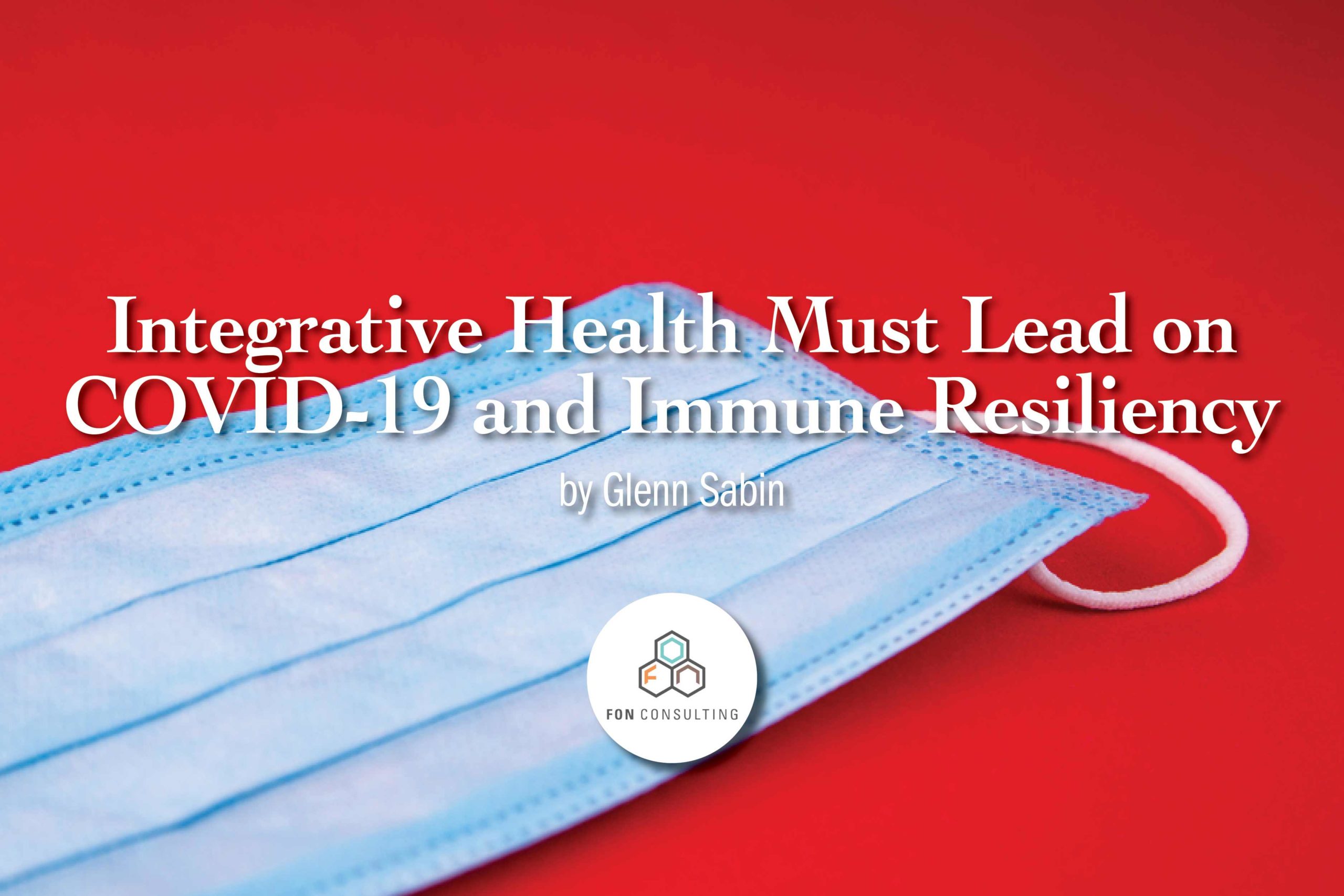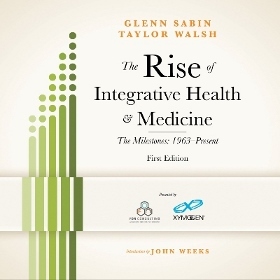The Rise of Integrative Health and Medicine—Milestones Continued: 2016—2018
By Glenn Sabin
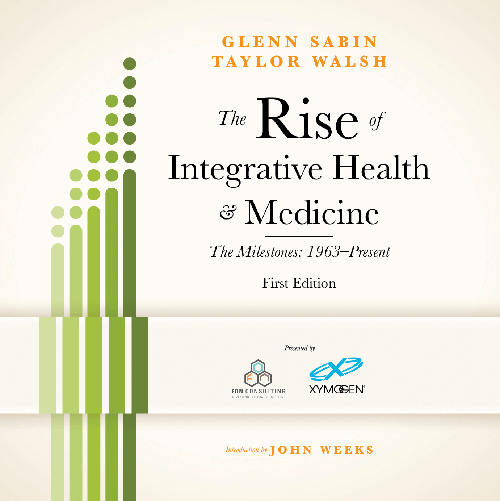
New addendum includes milestones from 2016–2018
In late 2016, FON and XYMOGEN released a 92-page publication titled The Rise of Integrative Health and Medicine—The Milestones: 1963—Present. The book is available free to access here.
These milestones were largely culled from the work of Rise’s foreword author John Weeks, editor and publisher of The Integrator Blog and our industry’s de facto historian. Rise was written by Whole HealthEd founder and strategist Taylor Walsh.
For the last several years Weeks has assembled a year-end ‘Coming of the Light’ list, capturing from his unique perspective the most impactful milestones affecting our community. As an extension of Rise, we offer the following excerpts from Weeks’ compilation of the field’s most influential events and activities covering 2016-2018.
[Weeks’ regular Integrator content is available here and sign-up for his twice monthly newsletter is here.]
2016
Originally published in Huffington Post.
-
The Opioid Crisis and Policy-Makers’ Uneven Inclusion of Integrative Therapies and Practitioners
The Obama $1.1 billion plan. The CDC Guideline for prescribing. Congressional passage of initial legislation. The Surgeon General’s entrance into the game. Throughout, we witnessed a surprisingly uneven entrance of the important role for integrative therapies and practices. Common sense here: why leave tools and approaches out? Chiropractic, naturopathic and acupuncture organizations worked to insert themselves in the dialogue. Credit the NCCIH for their timely Mayo publication on the scientific support for integrative pain care. Good news: thanks to the work of Matthew Bauer, LAc and colleagues, we know the AMA and other leading organizations are urging the “public and private payer policies must be fundamentally altered” to include more non-pharmacologic approaches.
-
Oregon Collaborative for Integrative Medicine Steps Up to Help Shift the Nation’s Therapeutic Order in Pain Care

Individual states are taking the lead on integrative opioid strategies. Vermont has new acupuncture Medicaid pilot. News will be coming soon from a Rhode Island integrative pilot. The key initiative, however, is in Oregon where their Coordinated Care Organizations are charged to reverse the therapeutic order in pain care and actually put integrative, non-pharma first. Coverage is extended to acupuncturists, chiropractors and more. Knowing the depth of this transition, for all parties, Samantha Simmons, MPH and the Oregon Collaborative for Integrative Medicine (OCIM- pronounced “awesome”) have joined with the Oregon Pain Management Commission to step into the breach. We will all have a lot to learn. This pilot warrants major philanthropic and governmental investment.
-
Claiming a History for Integrative Health and Medicine: Rise, Bravewell Story, EvoMed, Plus

If it is true, as Walter Benjamin wrote, that “history is written by the victors,” then what are the chances for those with no history? Two decades after “integrative” was named as a direction for medicine, versions of the field’s shared history are coming forward. The Bravewell Story from Bonnie Horrigan captured the massive, 15 year influence of that collaborative of philanthropists. Early chapters in James Maskell’s functional medicine-leaning Evolution of Medicine describe the shifts in medical understanding. My own chronicling in which I propose five “eras” since the 1960s has found wide audience interest in exploring this shared history. It is captured in this slide deck from a plenary for the Academy of Integrative Health and Medicine, and since refined at Duke, Georgetown, AMSA IM Scholars, and elsewhere. Yet the most accessible and efficient exploration is The Rise of Integrative Health and Medicine from FON Consulting and XYMOGEN which presents 125 milestones since 1963. Good steps are being taken to document and frame the movement’s history.
-
Glenn Sabin: Integrative Consultant and Marketeer Creates Rise, Writes n of 1, Produces Influential Blog

Over the past half-decade integrative center consultant Glenn Sabin has emerged as a powerful influencer in the field via his consulting, speaking and widely-read and utilized blog at his site, FON Consulting. This year Sabin branched out in big ways with two books. With his strong sense of the pulse on the field, Sabin conceived and organized the creation of Rise, #3 above, recognizing the value of history to the field. For me—who had the honor of writing the foreword to Rise—Sabin’s even more important contribution to the field is his remarkable journey that brought him personally, then professionally, to integrative health: n of 1: One Man’s Harvard-Documented Remission of Incurable Cancer with Only Natural Methods. The tone, flow, layout and content all combine to hold the reader close. The gift of Glenn’s engaging tale of working with top-tier conventional oncologists, leading integrative oncologists, pharmacists and others—including his spouse Linda as culinary medicinal agent!—is that one immediately begins thinking of “N of 1” as a verb. As in: How can I better “N of 1” this health issue of my own? What’s my path? His path shines multiple lights on one’s own. For the integrative health and medicine field, as for his cancer treatment, Sabin is an N of 1.
-
The Medical Industry’s “Rounding Error”—Shuttering of Major Integrative Centers

To the budgets of the multi-billion juggernauts of the US medical industry inappropriately styled as “healthcare systems,” integrative medicine is—as a colleague suggested recently—a “rounding error.” And as such it has become clear over the past two decades of multiple shuttering of significant integrative centers, a profound economic misalignment exists between the “volume-based” and technology-driven industry and the mission-and-value orientation of relatively low cost, human-intensive, integrative care. Still it was a shock when word came out—apologies, I am part way into writing this story—that the powerfully influential Continuum Center for Health and Healing no longer fit into the plans of its parent, the $3.5-billion, plus, Mount Sinai Health System. Meantime, when the $7-billion Banner Health took over University of Arizona Medicine they showed no interest in the Phoenix-based Arizona Integrative Health Center where the Andrew Weil-founded Arizona Center for Integrative Medicine anticipated proving integrative health’s business model as a low cost option for chronic disease. Be aware: another shoe is about to drop. Each, notably, was showing patterns of positive outcomes. Are these centers simply a misfit with the industrial focus of the volume based system?
-
Crucible for Transformation: Duke Leadership Program in Integrative Healthcare
If the present misfit of business models in #5 is a problem, then the critical response is to prepare leaders to understand this environment and figure out how to forge quality, and useful relationships and models. That, in a nutshell, is the mission of the Duke Leadership Program in Integrative Healthcare led by Adam Perlman, MD, MPH. This article on the program notes that the core faculty unites a deeply experienced team: Ben Kligler, MD, MPH, from Continuum (above), now with the Veterans Administration; Lori Knutson, RN, BCHN, formerly Penny George Institute, now Meridian Health; Horrigan, who brings in 20 years in the field as a publisher, editor, executive director and writer (see The Bravewell Story, above); and Perlman whose system work includes both St. Barnabas in New Jersey, and Duke. Faculty includes Melinda Ring, MD, whose clinical program is financially thriving at the Osher Center for Integrative Medicine at Northwestern. Perlman’s Duke program, while still climbing toward the black financially, is hitting on key quadruple aim targets that make the values case. Clearly this leadership program at Duke must, with each class, become an even more potent crucible for finding answers.
-
The Whole Person, “Kitchen Sink,” Individualized MEND Protocol: The Ornish Program for Alzheimers?
The data from the whole person, eclectic, exploratory and broadly integrative work with patients with Alzheimer’s of UCLA’s Dale Bredesen, MD began coming out in 2014 as the MEND protocol: Metabolic Enhancement for NeuroDegeneration. Bredesen shared details of a ten-patient case series that had nine successes, many remarkable. The chart of therapies is a classic “kitchen sink” integrative protocol for a complex patient: any agent or practice—35 in this case—that might in some way support the healing. Then build from among them an individualized plan with a high prioritization on a diet and sleep lifestyle combination. In 2016, a second publication, in Aging, stimulated a burst of media. Muses Labs, a business, with which Bredesen is no longer involved, is working on rolling out the clinical and research program nationally. George Washington University’s integrative medicine program, led by Mikhail Kogan, MD, became the first academic health center to offer MEND. The question arose: might MEND be the vehicle for elevating the value of an integrative approach to Alzheimer’s the way that Dean Ornish’s program brought them forward for reversing heart disease?
-
Toward a Global Movement: AIHM and European Anthroposophic Group Announce the “Stuttgart Declaration on Integrative Health and Medicine”

At the conclusion of a June 2016 international conference in Germany, the sponsoring organizations and over 600 participants issued the Stuttgart Integrative Health & Medicine Declaration. The document is a “call for action on governments, WHO and professional organizations” to sponsor and promote the integrative model as a solution to the global healthcare crisis. The sponsors are the USA-based Academy of Integrative Health and Medicine (AIHM) and the Dachverband Anthroposophische Medizin in Deutschland e.V. (DAMiD). The Stuttgart Declaration takes the important step of linking the “integrative” movement with the WHO-led efforts to bring primary care to all through more appropriate inclusion of traditional medicine products, practices and practitioners. The declaration does not have an action plan attached. It was posted here at Change.org and has attracted 6405 signatures. Not much yet, but a fine document and a start toward globalizing the movement.
-
Integrative Birth: New Hope in Bridging the Obstetrician-Midwifery Divide

The most awful evidence of medicine gone wrong is the way male doctors took birth away from midwives and natural process, put women on their backs, consigned them to hospitals, and took their newborns away from them. For starters. With C-sections still very high, the damage persists. Yet 2016 saw some steps in the right direction. The American Congress of Obstetricians and Gynecologists is finally softening its views on midwifery and home birth. While their Committee Opinion on Planned Home Birth reiterates the perspective that out of hospital births are safest in birth centers, they acknowledge that “each woman has the right to make a medically informed decision about delivery.” ACOG also endorsed global standards promoted by the National Association of Certified Professional Midwives NACPM), the professional organization representing the homebirth-focused, non-nurse midwives. Meantime, in another good sign, NACPM celebrates the first CPM to head the American Association of Birth Centers, Amy Johnson-Grass, ND, LM, LN, CPM, the organization’s new president-elect.
-
The Backdrop of the Ongoing and Often Ugly Challenges of the Medical Industry

The year ends amidst debate over the future of “Obamacare” (ACA). That 2010 law has positives, including expanded access, and for this field, inclusion—in language if not yet in practice—for the first time of integrative health ideas and practitioners. The downsides are the failure to control costs and the weakness in the transformational vision toward the medical industry. If anyone needed more evidence of the latter, then 2016 produced. A Hopkins researcher published a review that concluded that medicine itself is the nation’s 3rd top killer, at 251,000/year. Still tangled in efforts to be “evidence-based” and “patient-centered” and “value-based,” the predominantly volume-focused industry was urged by Dr. Don Berwick to finally enter a “moral age.” Awful levels of student, resident and physical depression and discontent are finally provoking action on health and wellbeing from the Accreditation Council for Graduate Medical Education (ACGME) among others. Then, as though to make the point that the point has not yet been made, in December the ACGME took comments on its plan to expand the presently acceptable 16-hr work day to 24-28-hr work day for young physicians. The combination of the industrial focus on volume and production, reductive mindset of biomedicine, and the still shocking low level of quality evidence in most medical practices may be a “perfect storm” for guaranteeing this thinking, and outcomes. Integrative principles of person-centered, whole person care, drawing on all useful traditions, and using the least invasive first are exceptional guides for actual reform. These don’t appear to be high on the list of the new administration. Hold on!
2017
Originally published in Huffington Post.
-
The Samuelis’ $200-Million Investment in Integrative Health at UC Irvine: Game Changer?

Susan and Henry Samueli: $200-million for integrative health
Numero uno for 2017 was not a challenge: Susan and Henri Samueli are investing $200-million at UC Irvine to more deeply implant and grow the research, education and clinical services to support an integrative health model. The power of the gift immediately became apparent with the level of the push-back from the anti-integrative crowd and the shameful media willingness to miss the story by challenging fringe aspects of the gift. An early 2017 Huffington Post story bemoaned the shutdown of the Wayne Jonas, MD-led Samueli Institute. The former East Coast beach-head for the Orange County couple for 15 years put their philanthropy at a very productive edge of research and policy in integrative health. The loss felt huge—until the ambitious, UC Irvine plan was announced. All the prior work and experience from Samuelis’ funding will have value as this huge initiative in U.S. medicine takes root, and grows. Let’s hope UC Irvine shows as much courage as the Samueli’s have. And perhaps the challenges that greeted their initiative argue for them jacking up the donation to create an Institute for Integrative Health Policy as part of the Irvine plan. It could help put the initiative, and movement, on more solid footing.
-
Non-Pharmacologic and Integrative Methods in Pain Guidelines: Reversing the Therapeutic Order of the Nation

If the Samuelis needed any ammunition to face the naysayers on their $200-milliion investment, governmental and non-governmental and scientific entities were, in the words of a Montana friend, guaranteed they were loaded for bear. Facing the nation’s chronic pain crisis—a.k.a. “Opioid epidemic—one after another key agency set their nets in the waters of research on non-pharmacologic care. Lo and behold, they caught enough evidence that their guidelines put an expanding range of non-pharmacologic, integrative practice and practitioners first. The kicker came when the Association of State Attorneys General put the insurance industry on notice that it was time to cover these treatments. States like Maine and Ohio and Washington started pilots on the evidence of their own—mainly with acupuncture—and Vermont reported positively on the results of their Medicaid pilot. This is of course good news for pain practice gone wrong. The better, long-term news for the actual practice of “health care” rather than disease suppression is the implanting in the nation’s clinical psyche that perhaps there are non-pharma, integrative approaches for multiple significant conditions. What a concept! This is nothing less than new habits of mind and practice to reset the therapeutic order of the Nation.
-
Weaving the Integrative Worlds: WHO Officially Links “Integrative” and “Complementary” into its “Traditional Medicine Strategy”

WHO Trad-Med leader Zhang Qi, the re-named initiative, and a ritual kicking off the PAHO network
The 2016 Top 10 shared how the integrative medicine leaders behind the Stuttgart Declaration on Integrative Health & Medicine focused significantly on the WHO’s Traditional Medicine Strategy 2014-2023. WHO has called for optimizing the use of traditional medicine “products, practices and practitioners” in achieving the goal of primary care for all. In May 2017, another set of principally integrative medicine leaders from wealthier nations again connected to the WHO strategy in the Berlin Agreement: Self Responsibility and Social Action in Practicing and Fostering Integrative Medicine and Health Globally. Zhang Qi, who directs the WHO’s work in this area, was invited to each of the conferences. He and his team began to gain more awareness of the common interests of the differently named movements. Now the agency’s trad-med initiative has officially rebranded itself as Traditional, Complementary and Integrative Medicine. Meantime, its Western Hemisphere affiliate, PAHO is stepping up its actions through the formation of a network of such initiatives in two dozen countries. As a wrinkle for the “integrative” community, PAHO’s traditional medicine consensus was for an “articulated” rather than “integrative” model. Still, the threads of the movement are being woven into a hopeful new pattern.
-
Integrative Health and Wellness Congressional Caucus Created
If significant federal policy change is a goal, then creating the right platforms for Congressional action can be a critical generative step. One proven strategy is for interested members of Congress to convene around an issue as a “Congressional caucus.” They then explore, raise awareness, and percolate policy initiatives. Until two months ago, the concepts, actors, and organizations involved with integrative health had no such home in Congress. Through work led principally by the Integrative Health Policy Consortium (IHPC)—see below—Colorado Representatives Jared Polis and Mike Coffman announced on October 25, 2017 the formation of the Integrative Health and Wellness Congressional Caucus. A campaign pushed by IHPC, the Integrator Blog and others to urge people to contact their members within a few days generated over 1880 letters from 47 states. Results of the first push will be known in January. The campaign to build the caucus with members from around the country—yours!—is still underway. Click in here—it just takes 3-5 minutes to send a letter. This is a bipartisan breeding ground for good ideas and a health-creating future. Get your members of Congress involved!
-
Len Wisneski, MD, Chair, Integrative Health Policy Consortium: Creating a Base for a Grand Strategy

Even in the deepest of inter-professional and integrative tribes, it remains a truism that an MD chair can be key to growth and advancement. Len Wisneski, MD, chair of the Integrative Health Policy Consortium (IHPC), has passionately filled that role for a decade for the leading policy arm of the USA’s integrative movement. In Wisneski’s term, IHPC has broadened from a mostly “CAM” base to now 24 Partners for Health: from a homeopathic certification organization to Integrative Medicine for the Underserved, from the Academy of Integrative Health and Medicine to midwives, medical acupuncturists and music therapists. This year Wisneski and his growing team: led development of the Integrative Health and Medicine Congressional Caucus—see above; actively participated in comment writing in multiple policy issues (thanks to board member Bill Reddy, LAc); played key roles with the first Integrative Pain Policy Summit (led by board member Bob Twillman, PhD); helped produce the timely and efficient, 4-organization-endorsed Moving Beyond Medications information sheet (thanks to IHPC’s special adviser, who Wisneski brought in, Margaret Chesney, PhD). Meantime, IHPC just completed a strategic plan and enters 2018 with a grand strategy (special thanks to Susan Haeger). Here’s a wish that visionary investors in health will link in! Alignment of interest note: I serve on the IHPC board where I watch Wisneski in action!
-
The Consortium: Three Significant Acts of Pain Policy Leadership Suggest the Potential of Its Policy Leverage

Saper, Tick and Nielsen: evidence of the clout the Consortium can have in the policy arena
The question on the table is what leverage might the 70 plus members of the Academic Consortium for Academic Medicine and Health (a.k.a. The Consortium) have if it put significant energy toward policy leadership for the transformation begged by the organization’s definition? Under the direction of chair Robert Saper, MD, MPH, the organization has shown more policy engagement and with it, additional evidence of its muscle.
The Consortium took a step toward collaboration in linking with other organizations on the Moving Beyond Medications information sheet. Prioritization of engagement in the pain dialogue took additional form with the publication of a white paper, led by Heather Tick, MD and acupuncturist-researcher Arya Nielsen, PhD, LAc, that does not mince words on urging the medical profession to right the damage of a drug-addled pain strategy. The billboard, however, for what the Consortium can mean for healthcare policy, is its success, also driven by Nielsen, in urging the Joint Commission to begin scoring their accredited institutions on the ways they are using non-pharma, integrative treatments. Here’s hoping that such muscle will continue as the group owns its influence for change as The Consortium.
-
Paul Mills, PhD: Research and Action Portfolio Spans Glyphosates at JAMA to Consciousness Research and Tibetan Medicine

Mills, the JAMA-related Glyphosate work, and activism for Tibetan medicine
UCSD researcher Paul Mills, PhD added urgency to the debate over Glyphosates with his research published in JAMA on the agent’s rapid uptake into humans since the expansion of GMOs in the mid-1990s. With a research team that included Deepak Chopra, MD and neuroscientist Rudolph Tanzi, PhD, Mills published Change in Sense of Nondual Awareness and Spiritual Awakening in Response to a Multidimensional Well-Being Program. The outcomes suggested that “an intensive program providing holistic instruction and experience in mind-body practices can lead to a significant and sustained shift in perception of self-awareness, one that is likely favorable to well-being.” Mills, the director of the UCSD Center of Excellence for Research and Training in Integrative Health, was not content as a researcher-educator. His concern related to Glyphosates led to the citizen science project called Herbicide Awareness and Research Project (HARP). And his fascination with the whole system of Tibetan medicine led to a leading role in putting on an October conference at Harvard on the field. Meantime, his integrative health base at UCSD has expanded through splitting into multiple departments—good news for shareholders in integrative health. Quite a year!
-
John Scaringe, DC, EdD: Leadership in Inter-professionalism and Culture in Academic Medicine

SCU’s Scaringe with three distinct investments: Snider, Schmalzl, and Whedon in the pursuit of team care and quality culture
One tough trick for moving practitioners from professional silos to stimulating team care requires nothing less than simultaneously breaking both internal and external patterns, habits and beliefs. No one in integrative health academic leadership has taken this on in the way John Scaringe, DC, EdD has in his role as president of the multidisciplinary Southern California University of Health Sciences. The leader of the former Los Angeles College of Chiropractic that now has programs in acupuncture, integrative physician assistants, Ayurvedic medicine, massage therapy and more, has repeatedly sent team leaders to participate with conventional academic health center leaders in Inter-professional Education Collaborative (IPEC) intensives.
Curriculum across programs has been shifted so students can learn “about, from, and with” members of other professions—the definition of inter-professional education. Knowing the stresses of change in health professional education, he brought in a national leader in forging relations between multiple professions, Pamela Snider, ND. Snider lead a year-long process as Chief Culture Officer. Scaringe’s SCU environment has proved conducive to such inter-professional teaching methods as the yoga-neuroscience laboratory offered by Laura Schmalzl, PhD. And knowing that where the rubber meets the road for all of this work is finding gainful employment for SCU graduates, Scaringe brought in former Dartmouth health services researcher James Whedon, DC, MS, whose work is building a base for cost savings and enhanced pain treatment. Remarkable strategic investments.
-
American Chiropractic Association Goes for Integration, Joins Choosing Wisely Movement

In 2017, the American Chiropractic Association took some significant steps to remake itself and re-frame its relationship to the nation’s 75,000 chiropractors. Early in the year, the dominant of the two often sparring— if not all-out warring—national professional associations (the other is the International Chiropractic Association) took a controversial step by announcing it was joining the Choosing Wisely movement.
The ACA went for the gusto and took on its profession’s use of spinal imaging. Then, later in the year the organization pushed its membership toward full integration with the dominant medical system through a new a Code of Ethics and updated treatment guidelines. These were wrapped into a significant rebranding. Inside the change was a shift in strategy toward the other professional association. Under the leadership of David Herd, DC, the ACA took the position that it would no longer present itself as the agency for the whole profession, only for its members. What this will mean for the profession will be seen. There is no question however that the organization is seeking a new relationship to the dominant school of medicine.
-
NIH NCCIH’s Wendy Weber, ND, PhD and the Women Leading the Naturopathic Medical Profession

A high percentage of the professionals drawn to integrative practice fields are women. So it should be no surprise that the first physician level profession in which leadership is dominated by women physicians would be the naturopathic medical profession.
At this year’s annual conference of the American Association of Naturopathic Physicians (AANP), the fact that 75%-85% of incoming naturopathic medical students are women burst into a full flowering of women leadership. Its four most significant leadership posts are now women (lower row, L-R: outgoing AANP president Jacelyn Chasse, ND, executive director Laura Farr, incoming AANP president Jaquel Patterson, ND, MBA, and Institute for Natural Medicine president Michelle Simon, ND, PhD). All four of the profession’s banquet night awardees were women (upper row L-R Griffin McMath, ND, Razi Berry, Amy Rothernberg, ND, and Jane Guiltinan, ND). Then at year’s end, as if to underscore the arrival of these leaders, naturopathic physician Wendy Weber, ND, PhD, MPH was named acting deputy director of the NIH National Center for Complementary and Integrative Medicine. Weber became the first member of any of the distinctly licensed integrative health professions to have assumed such a level of leadership anywhere in the NIH. Guild leadership has historically been dominated by a competitive, battling and embattled, male energy. What might leadership of a medical guild by women mean?
2018
Originally published in Today’s Practitioner.
-
Helen Langevin, MD Takes over at the National Center for Complementary and Integrative Health

What a fascinating concept: choose someone to head a research agency that has experience in the field! In September, word emerged that the former board member of the Society for Acupuncture Research and director of the Harvard Osher Center for Integrative Medicine, Helen Langevin, MD, was named the third director of the NIH National Center for Complementary and Integrative Health. Langevin’s the first with a rich experience in the integrative space (though credit her immediate predecessor, Josie Briggs, MD, for going to school on the integrative fields while on the job). Langevin is an extraordinary choice, given her pioneering work in mechanism—NIH’s coin of the realm—related to acupuncture and connective tissue. I welcomed her with a hope that just as the Republican Richard Nixon opened doors to Maoist China, perhaps Langevin, the basic science researcher, would finally move the agency—it’s been taking some steps—to fully embrace Congress’ implementation research mandate.
-
Social Justice in Integrative Medicine and Its Radical Embrace by the Certified Professional Midwives

A blot on the integrative medicine movement has been its upper class roots and clientele. Blame the lack of insurance coverage and cash models if you want, yet the ability and efforts to reach everyone with these care models has been challenging and under-attended. A February column by two leaders UCSF integrative medicine leaders Shelley Adler, PhD and Maria Chao, DrPH, MHA grabbed the issue by the collar and shook it toward action. Canadian researchers Heather Boon, PhD and Nadine Ijaz, PhD bluntly framed the international dimensions as colonialism. Integrative Medicine for the Underserved (IM4US) featured “health justice” as the theme in their annual conference. But no organization has committed to making the radically inclusive organizational changes as the National Association of Certified Professional Midwives (NACPM). A biracial set of NACPM leaders, Tanya Khemet Taiwo, CPM, MPH and Mary Lawlor, LM, CPM, shared in all transparency the bumpy road of the ongoing restructuring at NACPM to begin to belly-up to the values of equity and justice. Good starts—much work yet to be done here.
-
Harvard Medical School Moves to Rebrand Its Mission To Health (Then Steps Back)

For better and for worse, it’s hard to overstate the influence of Harvard Medical School (HMS) in U.S. medicine. So the HMS’ bold move to shift the paradigm in its mission statement toward health may be considered a significant step in the right direction for U.S. medicine. The original HMS mission is a devoted dance around the disease Maypole: “To create and nurture a diverse community of the best people committed to leadership in alleviating human suffering caused by disease.” Then, earlier this year, came the truly remarkable and paradigm shifting proposed draft that planted both feel in a full re-orientation toward health: “To create and nurture a diverse community dedicated to teaching and learning, discovery and scholarship, service and leadership to improve health and wellness for everyone.” However, the final pulled back into compromise: “To nurture a diverse, inclusive community dedicated to alleviating suffering and improving health and well-being for all through excellence in teaching and learning, discovery and scholarship, and service and leadership.” Too bad that the let’s-keep-attention-on-suffering-and-put-it-first contingent won out. Still, an important advance.
-
Taylor Walsh, Larry Rosen, MD and Whole Health in Grade Schools

For a decade, Taylor Walsh of Integrative Health Strategies has been a consultant, activist and writer–including for the Integrator–in the integrative health sphere. For 20 years Larry Rosen, MD has been a leading integrative pediatrician. This year the two connected in an effort to lay a platform for positively shifting the determinants of health in the population. The initiative is Whole Health ED“whole health education” in grade schools. Recognizing that activists are working in schools in multiple silos—offering programming such as yoga, nutrition, nature, movement, mindfulness, and gardening—Walsh and Rosen gathered 30 leaders for a robust June gathering in Washington, D.C. They had backing of the Marino Foundation in their ongoing effort to explore and share strategies, successes, challenges and the potential value of ongoing collaboration and presenting a combined, larger unit. The work is beginning to power up a consortium of these like interests to up-regulate the skills for health in school age children—who may then be more likely to understand and promote paths to health as they grow and age.
-
Liza Goldblatt, PhD, MPA, HA, the Collaborative and the Integrative Presence at the National Academy of Medicine

The old saw among lobbyists is that if you aren’t at the table, you are dinner. Given that the National Academy of Medicine (NAM) sets the table for the US—and to an extent globally—in policy in health and medicine, well, it’s a good place for integrative health to be if a broad impact is a desired outcome.
Since 2012, integrative health and the complementary medicine professions have had a seat at NAM through the philanthropically-backed (by an anonymous donor) membership and participation of the Academic Collaborative for Integrative Health (“the Collaborative”) in the Global Forum on Innovation in Health Professional Education. This year that relationship-building came to fruition in two significant events in which the Collaborative and its leader there, Elizabeth A. “Liza” Goldblatt, PhD, MPA/HA served on the workshop committee and played significant roles. The first related to stimulating well-being and resilience (I was honored to have a role) and the second the robust workshop on non-pharmacologic approaches to pain management. When the integrative field shows up, change happens.
-
David Eisenberg, MD and the Teaching Kitchens Collaborative

The minimal attention to nutrition in U.S. medical schools and medical industrial practice remain one of the most blatant blights on mainstream medical education and practice. A Belly Chakra Strategy for Moving Nutrition into Medical Institutions examines efforts of Harvard T.H. Chan School of Public Health’s David Eisenberg, MD and colleagues—including the Culinary Institute of America—to come at the issue through the senses—and now of research. A decade of work in building collaborators like Stanford, Dartmouth, Kaiser, Princeton, nearly a dozen public academic health centers, plus funding members such as Google and additional philanthropic partners, led to TKC’s first “Research Day” and the publication of 51 abstracts. These are key milestones for an initiative that needs evidence to continue to expand. What Eisenberg is ultimately seeking is data that shows doctors, insurers and medical delivery organizations can save and make money keeping people well—knowing food will then be a key strategy. Until then, notes Eisenberg, “the fact that less than 20 percent of medical schools have a single required course in nutrition—it’s a scandal. It’s outrageous. It’s obscene.”
-
Penny George and the George Family Foundation

For a philanthropist whose work for the field has been lower profile since the Bravewell Collaborative sunsetted and the recidivism of Allina Health in not energetically continuing the inpatient and outpatient integrative initiative led by the Penny George Institute there, the work of Penny George and her spouse Bill George with the George Family Foundation, has popped up in great spots this year. First, the partnership to move integrative to communities, with YMCAs. Second, funding of what became a terrific organizational newsletter for the Consortium. Third, backing a National Academy of Medicine Global Forum on Innovation in Health Professional Education workshop focused on systemic strategies to advance well-being and resilience. And finally, in early December, word that for 2019 and 2020 the George Family Foundation will sponsor the only ongoing representation of integrative at NAM by the Academic Collaborative for Integrative Health via Global Forum membership. Great strategic investments.
-
The Rise of the Creative Arts Therapies and Social Prescribing

Last spring, the director of extramural research at NCCIH Emmeline Edwards, PhD penned a blog-post that invited anyone interested to attend a breakfast round table at the International Congress on Integrative Medicine and Health: “Many current health challenges such as autism, chronic pain, and Alzheimer’s disease have remained largely intractable. Research suggests that a combination of therapeutic approaches will likely be needed to address these complex conditions. Creative art therapies may have a role to play in these multidisciplinary strategies.” This elevation in the U.S. of what a national leader in this arena, Ping Ho, MA, MPH of UCLA Arts and Healing has called “low hanging fruit” —in a response to Edwards—appears to be eons behind the United Kingdom where word emerged in a November 8, Smithsonian article that by 2023 doctors there will routinely be sending patients to “art, music, dance and singing lessons” as part of social prescribing.
-
George Washington University’s Misha Kogan, MD: The How Can He Do All That Award

It was a busy year for Mikhael “Misha” Kogan, MD. The George Washington University (GWU) integrative medicine leader rolled out his edited Integrative Geriatric Medicine volume. He co-led development of the health justice-oriented conference of Integrative Medicine for the Underserved (IM4US), hosted at GWU. At the International Congress for Integrative Medicine and Health in May he co-convened an overflow breakfast session on medical marijuana. Later news broke that Kogan will co-guest edit a special issue on the topic at Complementary Therapies in Medicine. His small not-for-profit AIM Health Institute, dedicated to providing group integrative care to the underserved (for which I serve on an advisory board) managed to forge relationship with Bread for the City clinics under a HRSA grant aimed at offering massage and acupuncture in patient care. Meantime, Kogan’s a bee-keeper—an intense practice of centering. He neatly puts the bees to work for his mission by distributing their honey to donors.
-
Jun Mao, MD: From Society for Integrative Oncology Presidency to Society for Acupuncture Research Presidency

If one imagines the entire integrative field as a single large administration, then the next step for Jun Mao, MD, MSCE, chief of integrative medicine service Memorial Sloan Kettering Hospital, is from leading one of the most significant “departments”—integrative oncology—to a horizontal move to guide a second—acupuncture research.
In his terms as president and past-president (under the exceptional presidency of Lynda Balneaves, RN, PhD) of the Society for Integrative Oncology, SIO’s accomplishments included forging a partnership special issue on the global movement for integrative oncology with the Journal of the National Cancer Institute and the endorsement of an SIO integrative breast cancer guideline by the American Society for Clinical Oncology.
One wonders, looking forward, what directions Mao may help set for the also underfunded yet influential Society for Acupuncture Research when he takes over the presidency there.
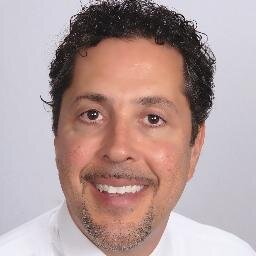
Read Glenn’s story.






















